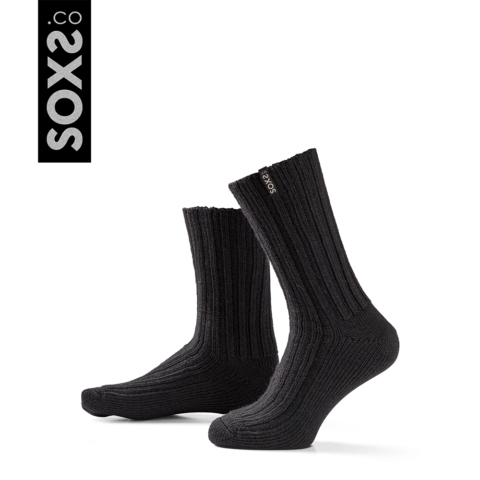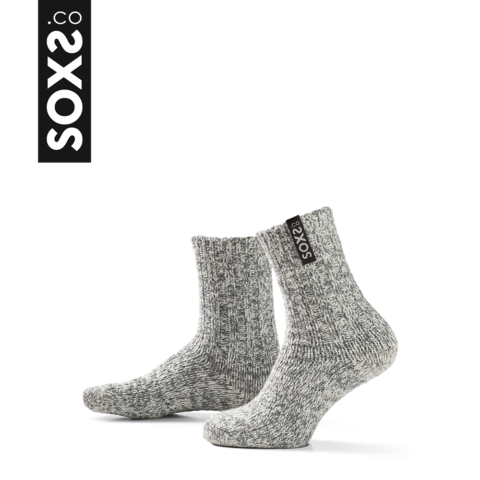Soft warm premium wool socks
Gift ready, stylishly packaged
Orders placed before 1:00 PM will be shipped today (on weekdays) PLEASE NOTE: The delivery time of Pimp My Soxs is 5 working days!
When you’re preparing for a hike, your socks deserve as much consideration as your boots. Quality hiking socks provide the necessary support and comfort that make the difference between an enjoyable trek and a painful journey. Your feet carry you through every adventure, and the right pair of wool socks ensures they stay comfortable along the way.
Hiking socks are designed specifically for outdoor activities, offering features that regular socks simply don’t provide. They’re crafted with materials and construction techniques that prevent blisters, manage moisture, and deliver essential cushioning for varied terrain.
These specialized socks serve as your first defense against common hiking issues like blisters and foot fatigue. With their snug fit and strategic padding, hiking socks support your feet precisely where needed, allowing you to explore with confidence and comfort.
Hiking socks are developed with strategic cushioning in high-impact areas like the heel and ball of the foot. This padding absorbs shock and reduces impact as you walk, preventing foot fatigue even on challenging trails.
The support features in quality hiking socks include reinforced heels and arch support that maintain proper foot alignment. This structural design reduces injury risk and ensures your feet can handle long days of hiking. The proper fit prevents bunching inside your boots—a common cause of uncomfortable blisters.
The material of your hiking socks directly affects their performance. Organic wool stands out as an excellent choice thanks to its natural moisture-wicking properties and temperature regulation. Wool socks keep your feet warm in cold weather and comfortably dry in summer, making them versatile for various hiking conditions.
Sustainable socks made from eco-friendly materials benefit both your feet and the environment. These socks often use organic wool that’s soft, breathable, and naturally resistant to odors. Some hiking socks incorporate small amounts of synthetic fibers to enhance durability and maintain their shape throughout your adventure.
Finding the perfect hiking socks starts with considering your specific activity. A short day hike might require different socks than a multi-day backpacking trip. For colder environments, choose thicker, more insulated wool socks, while lighter options work well for warm-weather hikes.
Proper fit is essential for hiking comfort. Your socks should fit snugly without constricting your feet. Try them on with your hiking boots to ensure they don’t bunch up or slip during use. Different brands may have varying sizes, so always check specific measurements before purchasing.
Proper care extends the life and performance of your hiking socks. Wool sock maintenance is straightforward but important. Most wool socks can be machine washed on a gentle cycle with cold water, though avoiding the dryer prevents shrinkage and fiber damage.
Hand washing with a gentle wool detergent and laying flat to dry helps preserve the shape and elasticity of your socks. This careful attention ensures they remain reliable companions for many adventures to come.
Even quality hiking socks face challenges on the trail. Blisters often result from friction between sock and skin. Prevent this by ensuring proper fit and considering thin liners for additional protection. Effective moisture management is crucial, so choose socks that actively wick sweat away from your skin.
Regular hikers may notice wear patterns in their socks. Rotating between several pairs extends their usefulness. Look for socks with reinforced areas designed to withstand trail conditions and prevent holes or thinning in high-friction spots.
Regular socks lack the cushioning, support, and moisture management that hiking demands. Hiking socks are purposefully designed for trail challenges, providing the comfort and protection your feet need during outdoor activities.
Investing in quality hiking socks from a specialized sock store delivers tangible benefits: improved comfort, reduced blister risk, and a more enjoyable hiking experience overall. Your feet work hard on every adventure—they deserve the proper support that only well-designed wool socks can provide.
Which hiking terrain challenges your feet the most? Discover our collection of durable, comfortable wool socks at soxs.co that will keep your feet feeling great on any trail.

Calf height

Calf height

Calf height